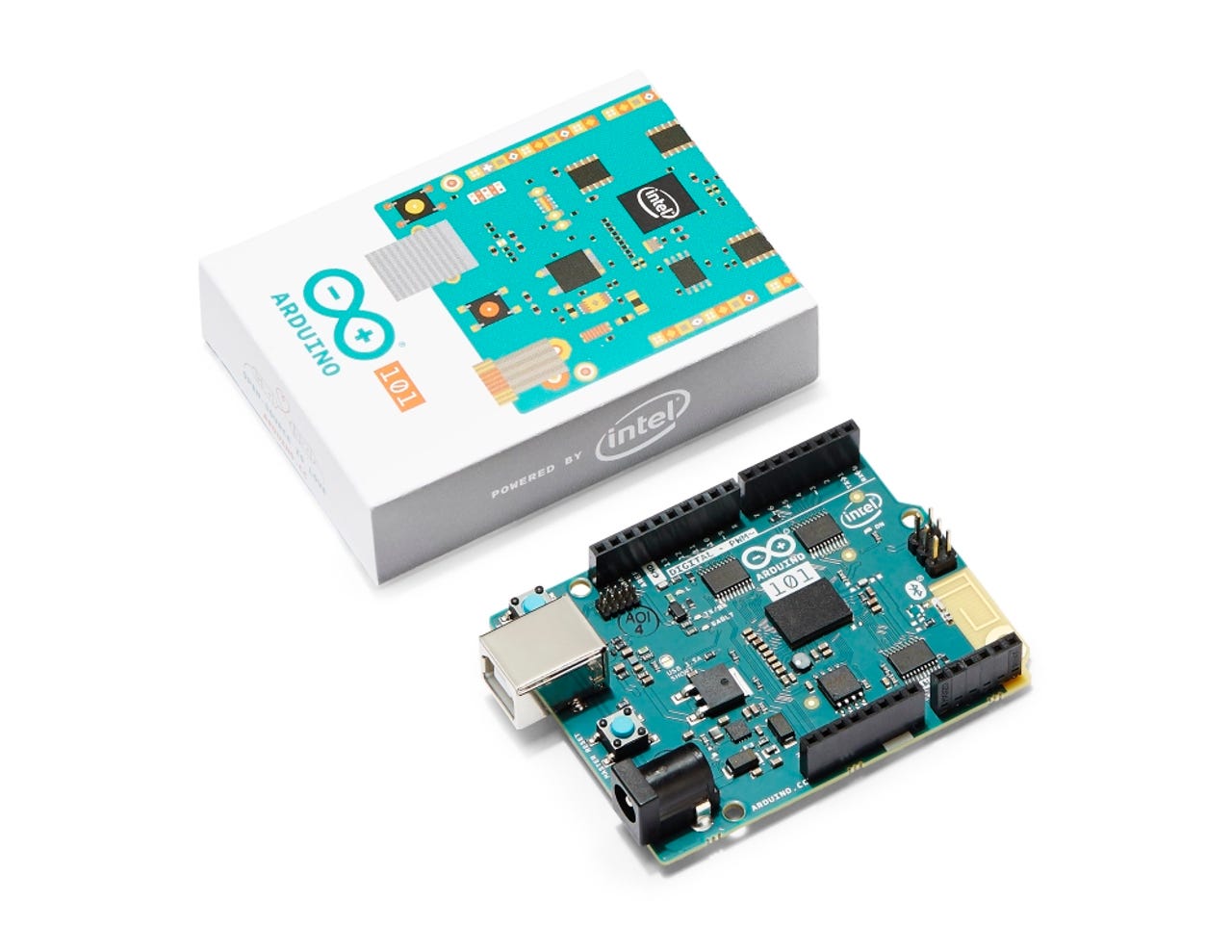Intel's tiny Curie chip powers new Arduino board


First announced at January's Consumer Electronics Show, Intel's Curie module is available in a shipping product. For $30, developers and makers can buy the Arduino 101, powered by an Intel Quark processor.
Until now, Arduino boards have traditionally been powered by chips based on the ARM architecture, most commonly used in smartphones and tablets. Don't too excited about cramming an Intel x86 processor into an Arduino though: You're obviously not going to get Intel Core i7 power or anything that comes close to a comparably priced Raspberry Pi.
Instead you get a 32-bit Quark, the low-power Intel chip aimed at the Internet of Things market with 384 kB of flash memory and 80 kB of RAM, combined with a digital signal processor, Bluetooth LE radio and 6-axis sensor.
That means the Arduino 101 board is targeting do-it-yourselfers and developers who want to prototype and create new products. Intel will also be bringing the product into the classroom as part of Arduino's own CTC, or Creative Technologies in the Classroom, program.
Clearly, Intel doesn't want to left outside looking in on the growing Internet of Things space, which it generally made the mistake of doing with the rise of mobile.
So, it's good to see the Curie module finally shipping in something. But like the mobile market, there are already plenty of non-Intel options for bridging the physical and digital world. It remains to be seen if Curie is too late or still has time to grab a foothold.